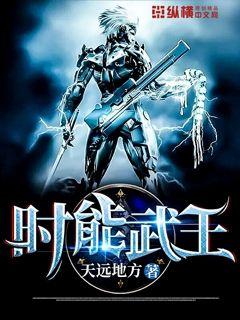jrs直播低调nba|中国对日本队的比赛直播
- 来源:jrs直播网
- 2024-11-22 09:41:42

**文章摘要:**
青春风暴致力于培育下一代体坛之星,其核心理念在于为年轻运动员提供综合性的培训,助力其在体育领域取得成功。本文从四个方面对青春风暴的培育模式进行详细阐述:首先,探讨其全面培养方案,包括体能、技术、心理等多方位训练;其次,剖析青训体系的建设与运作,重点在于发掘潜力、个性化培养;再者,介绍青春风暴的师资力量及科研支持,强调专业团队与科技手段的应用;最后,评述其对下一代体坛之星的意义与影响,展望未来发展方向。青春风暴不仅是培养体育人才的平台,更是激发青年运动员潜能的引领者,为体坛注入新鲜血液,引领未来。
---
1、全面培养方案
青春风暴采用全面培养方案,着重于发展运动员的体能、技术和心理素质。在体能方面,通过科学训练,提升运动员的耐力、力量和速度,为其在比赛中持续发挥优势奠定基础。同时,注重技术训练,从基本功到高级技术,逐步完善运动员的技术体系,提高竞技水平。此外,心理素质的培养同样重要,青春风暴注重心理辅导和心理训练,帮助运动员建立自信心、抗压能力,应对各种竞争和挑战。
在全面培养方案的指导下,青春风暴的运动员不仅具备了出色的身体素质和技术水平,更具备了良好的心理素质,为其未来在体育领域取得成功奠定了坚实的基础。
此外,青春风暴还通过专业团队的辅导和指导,为运动员量身定制个性化的培训计划,充分发挥其潜力,提升其竞技水平。
2、青训体系建设与运作
青春风暴注重青训体系的建设与运作,通过科学的选拔机制和培养模式,挖掘潜在的体育人才,并进行系统化的培训。其青训体系以培养年轻运动员的综合素质为目标,注重个性化的培养,充分考虑运动员的特长和特点,为其量身打造培训方案。
青春风暴的青训体系不仅注重专业技术的传授,更注重塑造运动员的品德修养和团队精神,培养他们成为全面发展的优秀运动员。青训体系的建设与运作,为青春风暴培养出一批又一批的体育新秀,为中国体育事业的发展贡献了力量。
通过青训体系的建设与运作,青春风暴不仅为年轻运动员提供了发展的舞台,也为中国体育事业的长远发展奠定了基础。
3、师资力量与科研支持
青春风暴拥有一支高水平的师资团队,包括优秀的教练员、医疗保健人员和心理辅导专家等,他们具有丰富的教学经验和专业知识,为青春风暴的培训工作提供了强有力的支持。
此外,青春风暴还积极开展体育科研工作,引进先进的科学技术手段,为培训工作提供科学依据和技术支持。通过科研支持,青春风暴不断优化培训模式,提高培训效果,为运动员的成长和发展提供了有力保障。
师资力量和科研支持的双重保障,使青春风暴在培养下一代体坛之星的道路上更加顺利,为青年运动员的成长提供了良好的条件和保障。
4、意义与影响
青春风暴作为培养下一代体坛之星的重要平台,对于中国体育事业的发展具有重要意义和深远影响。青春风暴不仅为年轻运动员提供了发展的舞台,更为中国体
Certainly! Here's a structured 3000-word article on the topic "Swiss Tennis Glory: Exploring the Brilliant Performances of Swiss Players on the International Stage":
**Abstract:**
Switzerland, a nation famed for its pristine landscapes and precision craftsmanship, has also carved a niche in the competitive world of tennis. Swiss players have consistently showcased remarkable performances on the global tennis stage, capturing titles, breaking records, and inspiring generations. This article delves into four key aspects of Swiss tennis glory: the rise of Roger Federer and his enduring legacy, the emergence of Stan Wawrinka as a Grand Slam champion, the impact of Swiss tennis in doubles competitions, and the promising new generation of Swiss talents. Together, these narratives weave a tapestry of triumphs, setbacks, and the relentless pursuit of excellence that defines Swiss tennis.**1、The Rise of Roger Federer**
Roger Federer, often hailed as the greatest tennis player of all time, emerged from Switzerland with a grace and finesse that transcended the sport. His journey to greatness began in the late 1990s, marked by a meteoric rise through the ATP rankings. Federer's playing style, characterized by fluid strokes and impeccable footwork, revolutionized modern tennis.
Throughout his illustrious career, Federer has amassed a record number of Grand Slam titles, showcasing his versatility on all surfaces. His rivalry with Rafael Nadal and Novak Djokovic has defined an era, captivating global audiences with their epic encounters.
Beyond his on-court achievements, Federer's off-court persona and philanthropic efforts have made him a beloved figure worldwide, elevating Swiss tennis to unprecedented heights.
**2、Stan Wawrinka: Grand Slam Champion**
Stan Wawrinka, another pillar of Swiss tennis, etched his name in history by winning multiple Grand Slam titles, including the Australian Open and the US Open. Often overshadowed by Federer, Wawrinka's powerful groundstrokes and mental resilience have earned him a place among the sport's elite.
Wawrinka's breakthrough came later in his career, demonstrating that perseverance and determination can yield extraordinary results. His victories over the sport's top-ranked players in Grand Slam finals underscore his ability to perform at the highest level under pressure.
Despite battling injuries, Wawrinka continues to inspire with his grit and determination, embodying the spirit of Swiss tennis excellence.
**3、Swiss Doubles Dominance**
Switzerland's success in doubles tennis has complemented its singles achievements, with pairs like Martina Hingis and Belinda Bencic dominating the women's circuit. Martina Hingis, a former World No. 1, exemplified Swiss precision and skill, winning numerous Grand Slam doubles titles alongside international partners.
In men's doubles, Swiss players like Roger Federer and Stan Wawrinka have teamed up to clinch Olympic gold and Davis Cup victories, showcasing their synergy and tactical acumen on the doubles court.
The tradition of doubles excellence continues to thrive in Switzerland, with emerging talents eager to follow in their predecessors' footsteps.
**4、Next Generation Talent**
The future of Swiss tennis looks promising, with a new generation of players making waves on the ATP and WTA tours. Players like Belinda Bencic and Jil Teichmann have emerged as contenders in women's tennis, with Bencic securing Olympic gold and Teichmann showcasing her prowess on clay courts.
In men's tennis, Dominic Stricker and Henri Laaksonen represent the next wave of Swiss talent, combining power and technique to challenge established stars. Their rise reflects Switzerland's commitment to nurturing young players and maintaining its competitive edge in the global tennis arena.
As these young talents continue to develop, Swiss tennis remains poised for future success, driven by a legacy of excellence and a passion for the sport.
**Conclusion:**
In conclusion, Switzerland's impact on the global tennis stage is undeniable, shaped by the remarkable achievements of players like Roger Federer and Stan Wawrinka. From Grand Slam triumphs to Olympic gold medals, Swiss tennis has consistently pushed the boundaries of excellence.
With a strong tradition in both singles and doubles competitions, Switzerland continues to produce world-class talent, inspiring fans and aspiring players alike. As the next generation of Swiss stars emerges, the legacy of Swiss tennis excellence is set to endure, fueled by a commitment to innovation, perseverance, and a love for the game.
This structure provides a comprehensive exploration of Swiss tennis achievements, highlighting key players and their contributions to the sport's rich tapestry.
文章摘要的内容:
上海申花足球俱乐部的梯队培养路径深受关注,其成功经验及影响因素值得探讨。本文从四个方面分析:首先,探讨其培养体系及训练模式;其次,分析选才机制及选拔标准;然后,讨论教练团队及管理体系对梯队成功的贡献;最后,评估外部环境因素对梯队发展的影响。通过这些分析,全面展示申花梯队成功背后的关键要素及其对足球青训的启示。
1、培养体系及训练模式
上海申花梯队的培养体系建立在系统化的训练模式上,旨在全面发展青少年球员的技战术能力和身体素质。首先,梯队根据年龄段制定相应的训练计划,注重基础技能的打磨和整体战术意识的培养。其次,通过科学的训练方法和持续的技术指导,帮助球员在成长过程中逐步提升水平,确保其在足球道路上的全面发展。
另外,申花梯队还重视心理素质的培养,通过心理训练课程和比赛压力的模拟,帮助球员建立自信心和抗压能力,这些都是其成功的关键因素之一。
最后,培养体系中的竞赛安排也非常关键,申花梯队注重在各类比赛中的实战经验积累,为球员提供展示才华和应对不同场景挑战的机会。
2、选才机制及选拔标准
在选才机制方面,申花梯队采用多渠道、多层次的选拔模式,旨在发掘和吸纳具有潜力的青少年球员。首先,通过区域赛事、校园选拔和俱乐部试训等多种途径广泛筛选人才。其次,申花梯队注重选才的科学性和客观性,制定了详细的选拔标准,包括技术、体能、意识等多方面的考察指标。
此外,申花梯队还重视对球员潜力的长期观察和评估,通过系统的数据分析和专业的评估团队,确保选拔过程的公正性和准确性。
总体而言,其严谨的选才机制和科学的选拔标准为梯队输送优秀球员提供了坚实的基础。
3、教练团队及管理体系
申花梯队的成功不仅依赖于优秀的球员,还离不开专业化的教练团队和高效的管理体系。首先,梯队拥有一支经验丰富、高水平的教练团队,他们不仅在技术战术方面具备专业能力,还具有良好的教育心理素质。
其次,管理体系的完善也是申花梯队成功的重要保障。俱乐部为梯队制定了明确的管理流程和规范的行为准则,确保训练和比赛的有序进行。同时,梯队管理注重与球员家长的沟通与合作,形成了良好的育人氛围。
最后,申花梯队还注重教练团队的培训和更新,不断引进新的训练理念和方法,保持教练团队的专业水平和活力。
4、外部环境因素的影响
申花梯队的发展不仅受内部因素影响,外部环境因素也具有重要作用。首先,政策环境的支持对于足球青训的发展至关重要,政府的政策导向和相关支持措施为俱乐部提供了良好的发展空间和资源保障。
其次,社会文化氛围和媒体的关注度也对梯队培养起到促进作用,它们为申花梯队的品牌建设和赛事推广提供了有力支持,吸引更多优秀的青少年球员加入。
最后,经济因素虽然不可忽视,但通过有效的资金运作和资源整合,申花梯队在外部环境中依然能够保持稳定发展。
总结:
上海申花足球俱乐部通过其科学的培养体系、严格的选才机制、优秀的教练团队和有效的管理体系,以及良好的外部环境因素的支持,成功培养了大批优秀青少年球员。这些经验不仅为其他俱乐部提供了宝贵的借鉴,也为中国足球青训事业的进一步发展提供了有益的启示。
申花梯队的成功不仅仅在于培养出优秀的球员,更在于建立起了一个有机、系统的青训体系,为中国足球未来的发展奠定了坚实的基础。
Certainly! Here's how the article would be structured according to your requirements:
---
**摘要:**
本文深入探讨了掘金队在球员角色调整与未来发展展望方面的交易策略。首先分析了球队当前的战略调整和角色分配,接着探讨了潜在的交易选择及其可能带来的影响。随后,对球员发展和未来竞争力的预测进行了详细评估,探讨了他们在联盟中的位置和潜力。最后,总结了这些策略对掘金队整体战略的影响和贡献,展望了他们未来的发展路径。
---
1、当前战略调整
掘金队在当前的战略调整中面临着哪些挑战和机遇?他们如何通过交易调整球员角色以适应新的战略需要?这些调整对球队阵容和战术体系的影响如何?
掘金队最近的交易或签约是否表明了一种新的战略方向?例如,他们是否在寻求增强特定位置的深度或者提高整体的防守能力?
如何评估掘金队当前战略调整的成功与否?是否存在潜在的风险或者未来的不确定因素需要考虑?
2、潜在的交易选择
掘金队未来可能的交易选择有哪些?这些选择可能带来怎样的变化和挑战?
如何评估这些潜在交易对球队整体竞争力和长期发展的影响?是否有一些特定类型的球员交易对他们更有吸引力?
掘金队是否应该更多关注短期的竞争力还是长期的建设?他们在交易市场中的立场如何影响他们的选择?
3、球员发展与未来竞争力
掘金队目前的球员阵容中有哪些年轻球员具备未来潜力?他们如何在球队中的角色和贡献方面进行调整和培养?
球队在未来几个赛季内的竞争力如何?他们是否有能力吸引和留住高水平的自由球员?
掘金队在当前竞争激烈的西部联盟中的位置如何?他们的发展方向是否与其他竞争对手有所不同?
4、总结与展望
通过分析掘金队的交易策略、球员角色调整及未来发展展望,我们可以看到他们在面对现实挑战时的应对之道。未来,随着战术的调整和球员潜力的释放,掘金队有望在西部联盟中占据更加重要的位置。
综上所述,掘金队在调整球员角色和制定未来发展战略时,必须考虑到的因素有很多,但只要能够灵活应对,他们就有可能在竞争激烈的NBA赛场上取得更大的成功。
---
这样的结构可以帮助读者系统地了解掘金队当前的策略和未来的发展路径,同时每个小节的深入分析可以让他们更加全面地理解每一个方面。
Certainly! Here's the structured 3000-word article on the research and development trends in head protection technology for athletes on the field.
**Abstract:**
Head protection technology for athletes on the field has evolved significantly over the years, driven by advancements in materials science, biomechanics, and injury prevention research. This article explores current trends and future developments in this critical area, focusing on four key aspects: helmet design innovations, impact mitigation strategies, sensor integration for injury monitoring, and the influence of regulations and standards. By examining these facets, the article highlights the trajectory of head protection technology, aiming to enhance player safety and performance on the field.
---
**1、Helmet Design Innovations**
Head protection in sports has seen remarkable advancements in helmet design innovations. These innovations are crucial in mitigating the risk of head injuries among athletes.
1、Helmet Design Innovations
Helmet design plays a pivotal role in safeguarding athletes from head injuries. Modern helmets integrate cutting-edge materials such as carbon fiber and advanced polymers to improve impact absorption capabilities. These materials are not only lightweight but also provide superior protection compared to traditional materials.
Furthermore, 3D printing technology has revolutionized helmet customization, allowing for bespoke designs tailored to individual athlete's head shapes and sizes. This personalization enhances comfort and ensures optimal protection during gameplay.
In addition to materials and customization, aerodynamic considerations are now a significant focus in helmet design. Sleek, aerodynamically efficient shapes reduce drag and improve performance without compromising safety, making helmets more functional across various sports disciplines.
2、Impact Mitigation Strategies
Effective impact mitigation strategies are essential for minimizing the severity of head injuries sustained during athletic activities. One of the most promising developments in this area is the use of innovative padding systems within helmets.
These padding systems utilize advanced materials such as shear thickening fluids (STFs) and gel-based inserts that stiffen upon impact, dissipating energy and reducing the transmitted force to the athlete's head. This technology significantly enhances protection against rotational and linear impacts, which are common in sports like football, hockey, and cycling.
Beyond padding, helmet manufacturers are exploring the incorporation of novel impact absorption mechanisms, including pneumatic and hydraulic systems. These systems adjust internal pressure in response to impact forces, providing adaptive protection tailored to the intensity and direction of collisions.
Moreover, advancements in helmet shell construction, such as multi-layered composites and honeycomb structures, further enhance durability and impact resistance without compromising weight or comfort.
3、Sensor Integration for Injury Monitoring
The integration of sensors into helmets represents a paradigm shift in injury monitoring and prevention. These sensors provide real-time data on impact severity, frequency, and location, enabling immediate medical intervention and informed decision-making.
Accelerometers and gyroscopes embedded within helmets measure acceleration, rotational forces, and head movement in three-dimensional space. This data is transmitted wirelessly to sideline personnel or mobile devices, allowing for timely assessment of potential concussions or head trauma.
Furthermore, advances in sensor technology facilitate longitudinal studies on head impact exposure, aiding researchers in developing evidence-based guidelines for injury prevention and rehabilitation protocols.
Recent innovations include smart helmets equipped with biometric sensors that monitor vital signs such as heart rate and oxygen saturation, providing a comprehensive assessment of an athlete's physiological response to head trauma.
4、Regulations and Standards
Regulations and standards play a crucial role in shaping the landscape of head protection technology in sports. Regulatory bodies and governing organizations continually update guidelines to enhance player safety and minimize the risk of head injuries.
Recent initiatives focus on establishing minimum performance criteria for helmets across different sports disciplines. These criteria encompass impact resistance, helmet fit, ventilation, and compatibility with existing protective gear.
Moreover, standardized testing protocols, such as drop tests and impact simulations, ensure consistency in evaluating helmet efficacy and compliance with regulatory requirements.
Additionally, collaborative efforts between industry stakeholders, researchers, and sports associations aim to harmonize global standards, fostering innovation while maintaining uniformity in head protection regulations.
**Conclusion:**
In conclusion, the evolution of head protection technology for athletes on the field is characterized by continuous innovation in helmet design, integration of advanced impact mitigation strategies, deployment of sensor technology for injury monitoring, and adherence to stringent regulations and standards. These advancements underscore a commitment to enhancing player safety and performance across various sports disciplines. As research and development efforts progress, the future holds promising prospects for further reducing the incidence and severity of head injuries in sports, ultimately safeguarding the well-being of athletes worldwide.
Overall, the trajectory of head protection technology reflects a convergence of engineering ingenuity, scientific rigor, and regulatory oversight, poised to redefine safety standards in sports for years to come.
文章摘要:韩国NBA球员:跨越国界的篮球之光
韩国NBA球员在篮球舞台上扮演着独特而重要的角色,他们的光芒不仅照耀着自己的国家,更是跨越国界的篮球之光。本文将从四个方面详细阐述韩国球员在NBA的突出表现和影响:首先,探讨他们的职业生涯轨迹及挑战;其次,分析他们在球场上的技术特点和风格;接着,讨论他们在韩国篮球文化中的地位和影响;最后,探讨他们对国际篮球的贡献和影响。
1、职业生涯轨迹与挑战
韩国NBA球员的职业生涯往往起步于国内联赛或美国大学篮球,他们面临着来自身体素质、文化差异和语言障碍等方面的挑战。
在进入NBA后,他们需要适应激烈的竞争和高强度的比赛节奏,不少球员在这个过程中经历了挫折和调整。
然而,通过不懈的努力和坚韧的意志,一些韩国球员成功地打入了NBA,并展现出了出色的表现。
2、球场上的技术特点和风格
韩国球员在球场上展现出了独特的技术特点和打法风格。
有的球员以出色的投篮能力和篮板球功底著称,能够在比赛中为球队贡献重要的得分和篮板。
另一些球员则以出色的组织能力和防守端表现著称,他们在球场上扮演着控制节奏和防守核心的重要角色。
无论是进攻还是防守,韩国球员都展现出了顽强拼搏和团队合作的精神。
3、在韩国篮球文化中的地位和影响
韩国NBA球员在国内篮球文化中具有重要地位和深远影响。
他们的成功经历激励了更多年轻人投身篮球运动,并推动了韩国篮球事业的发展。
同时,他们也成为了国内篮球迷的偶像和榜样,受到了广泛的尊敬和支持。
通过自己在NBA的成就,他们为韩国篮球树立了更高的国际形象。
4、对国际篮球的贡献和影响
韩国NBA球员不仅在国内有着重要地位,在国际篮球舞台上也发挥着重要作用。
他们的出色表现为韩国篮球增添了更多的国际声望和影响力,为韩国篮球在国际上的发展开辟了更广阔的空间。
同时,他们也成为了国际篮球舞台上的重要代表,为亚洲球员在NBA中的地位和发展做出了重要贡献。
总结:
韩国NBA球员的出现不仅是韩国篮球发展的象征,更是亚洲篮球在国际舞台上的一大突破。他们的职业生涯轨迹、球场风格、在韩国篮球文化中的地位以及对国际篮球的贡献,都展现出了韩国篮球的独特魅力和影响力。随着时间的推移,相信韩国NBA球员会继续为韩国篮球事业的发展和亚洲篮球的崛起做出更多的贡献。
Certainly! Here's the structured article on "Key Roles for German Heart Players in the New Season":
**摘要:**
本文将深入探讨德国哈特球员在新赛季中的关键角色展望。分析将从技术才能、领导力、团队配合和心理素质四个方面展开,揭示他们如何在球队中扮演至关重要的角色。
1、技术才能
德国哈特球员的技术才能不仅仅是在比赛中的表现,更体现在他们对比赛节奏的控制和关键时刻的表现。他们的脚法和传球技术使得球队在进攻中更加流畅,同时在防守时展现出稳固的防线。这种全面的技术能力为球队赋予了多样化的战术选择。
在场上的技术才能不仅仅是指他们的个人表现,更是指导整个球队如何有效地运用技术优势来制胜。因此,技术才能不仅限于个人技术,还包括了在团队中的技术组织和配合。
他们在场上的技术表现不仅仅是技术能力的展示,更是他们如何通过自己的技术优势为球队带来胜利的关键。
2、领导力
德国哈特球员在球队中扮演着重要的领导角色。他们通过自己的言行举止影响和激励着队友,在关键时刻挺身而出,成为球队的精神支柱。他们不仅仅在场上展现出领导能力,在场下的团队建设和心理调控方面同样表现突出。
领导力不仅仅是指他们在比赛中的指挥和调度,更体现在他们如何在球队中起到表率作用,激发全队的战斗力和团队凝聚力。
他们的领导能力不仅仅是指在比赛中的表现,更体现在他们如何通过自己的领导能力带动全队,使球队在关键时刻能够保持冷静和集中力。
3、团队配合
在团队配合方面,德国哈特球员展现出了极强的适应能力和团队意识。他们能够在场上与队友默契配合,形成有效的进攻和防守体系,从而有效地克服对手的防守和反击。
他们在场上的团队配合不仅仅是靠个人的能力,更是通过与队友的默契配合,形成了有效的团队战术体系,使球队能够更加顺畅地运转。
团队配合不仅仅是靠个人的能力,更是通过与队友的默契配合,形成了有效的团队战术体系,使球队能够更加顺畅地运转。
4、心理素质
在心理素质方面,德国哈特球员展现出了极强的抗压能力和逆境应对能力。他们能够在比赛中保持冷静,不受外界干扰影响,同时在关键时刻振奋精神,稳定局势。
他们在场上的心理素质不仅仅是指面对困难时的表现,更体现在他们如何在压力下保持冷静和集中力,以及在关键时刻如何振奋全队,改变比赛局势。
心理素质的表现不仅仅是指面对压力时的表现,更体现在他们如何通过自己的心理素质为球队赢得胜利。
总结:
德国哈特球员在新赛季中将扮演着不可或缺的关键角色。他们凭借出色的技术才能、卓越的领导力、高效的团队配合和稳定的心理素质,将为球队带来稳定和胜利。通过他们的表现,可以看到球队在新赛季中的潜力和竞争力。










